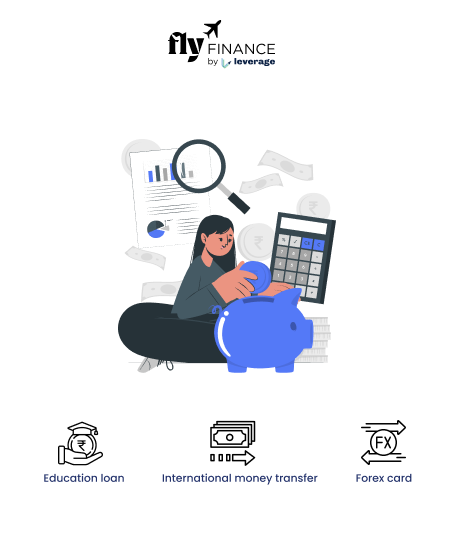When it comes to financing your education, understanding the various types of loans available is crucial. Unsubsidized loans are one such option that can help students pursue their academic dreams. Even these loans are federal student loans available to both undergraduate and graduate students. Unlike subsidized loans, which are based on financial need, unsubsidized loans are not tied to your income or financial circumstances. This means that you can qualify for an unsubsidized loan regardless of your financial situation. In this blog post, you will delve into the world of unsubsidized loans, exploring what they are, how they differ from subsidized loans, and what you need to consider before opting for this financial aid option.
Difference Between Subsidized Loans and Unsubsidized Loans
Subsidized loans and unsubsidized loans are both types of student loans available in the United States. However, there are significant differences between the two, particularly in how interest is handled during different periods. Here are the key distinctions:
| Particulars | Subsidized Loans | Unsubsidized Loans |
| Interest Accrual | With subsidized loans, the federal government pays the interest that accrues on the loan while the borrower is in school at least half-time, during the grace period (typically six months after leaving school), and during authorized deferment periods. This means that the borrower is not responsible for paying interest during these periods, reducing the overall cost of the loan. | Unsubsidized loans start accruing interest as soon as they are disbursed, including while the borrower is in school and during deferment periods. |
| Financial Need Requirement | Subsidized loans are need-based, meaning these are awarded to students who demonstrate financial need based on the information provided on the Free Application for Federal Student Aid (FAFSA). The amount of subsidized loans a student can receive is determined by their financial need and other factors. | Unsubsidized loans, on the other hand, are not based on financial need. These are available to both undergraduate and graduate students, regardless of their income level or financial need. |
Loan Limits: The loan limits for subsidized and unsubsidized loans may differ. Subsidized loans generally have lower borrowing limits compared to unsubsidized loans. The specific loan limits are determined by the U.S. Department of Education and vary depending on the student’s grade level, dependency status, and other factors.
Interest Rates: The interest rates for subsidized and unsubsidized loans may be different. The interest rates for federal student loans are set by Congress and can change annually. It’s essential to check the current rates at the time of borrowing.
Eligibility Criteria for Unsubsidized Loans
Unsubsidized loans are a type of student loan available in the United States. Unlike subsidized loans, unsubsidized loans accrue interest while the borrower is in school and during other periods of deferment. To be eligible for unsubsidized loans, you generally need to meet the following criteria:
Citizenship or Eligible Non-Citizen Status
You must be a U.S. citizen, U.S. national, or an eligible non-citizen to qualify for unsubsidized loans. Eligible non-citizens may include permanent residents or individuals with refugee or asylum status.
Enrollment in an Eligible School
To be eligible for unsubsidized loans, you must be enrolled at least half-time in an eligible postsecondary institution, such as a college, university, or vocational school.
Completion of the Free Application for Federal Student Aid (FAFSA)
To determine your eligibility for federal financial aid, including unsubsidized loans, you must complete the FAFSA each year. The information provided on the FAFSA is used to assess your financial need and determine the loan amounts you are eligible to receive.
Academic Standing
You must be in good academic standing and making satisfactory academic progress as determined by your school. If you fall below certain academic standards, you may become ineligible for financial aid, including unsubsidized loans.
Annual and Aggregate Loan Limits
There are limits on the amount of unsubsidized loans you can borrow each academic year and over your entire academic career. The U.S. Department of Education sets these limits which may vary depending on your dependency status, grade level, and other factors.
Must Read: Benefits of Education Loans
It’s important to note that meeting the eligibility criteria for unsubsidized loans does not guarantee approval or determine the loan terms. The actual loan amounts, interest rates, and repayment options will be determined by the U.S. Department of Education or the lending institution that disburses the loan. Also, it is recommended to contact your school’s financial aid office or visit the official website of the U.S. Department of Education’s Office of Federal Student Aid for the most up-to-date and accurate information regarding eligibility and application requirements for unsubsidized loans.
How to Apply for Unsubsidized Loans?
To apply for an unsubsidized student loan in the United States, you need to follow these steps:
Complete the FAFSA
Start by completing the Free Application for Federal Student Aid (FAFSA) form. The FAFSA is available online at their official website and collects information about your financial situation. Be sure to include the schools you’re interested in attending on your FAFSA.
Receive the Student Aid Report (SAR)
After submitting the FAFSA, you will receive a Student Aid Report (SAR) via email or mail. Review the SAR for any errors or corrections that need to be made.
Receive Financial Aid Award Letter
Once your FAFSA is processed, the schools you listed on the FAFSA will send you a financial aid award letter. This letter will detail the types and amounts of financial aid you are eligible to receive, including any unsubsidized loans.
Accept or Decline the Loan
Review the financial aid award letter and determine if you want to accept the unsubsidized loan offered to you. Keep in mind that you are not obligated to accept the full loan amount offered. You can choose to accept a partial amount or decline the loan altogether.
Complete Entrance Counseling (if required)
If you are a first-time borrower of federal student loans, you may be required to complete entrance counseling. This counseling session provides information about your rights and responsibilities as a borrower and helps ensure you understand the loan terms and repayment process. Entrance counseling can usually be completed online through the U.S. Department of Education’s website.
Sign the Master Promissory Note (MPN)
To officially borrow an unsubsidized loan, you need to sign a Master Promissory Note (MPN). The MPN is a legally binding agreement between you and the lender, stating that you promise to repay the loan. You can sign the MPN electronically on the U.S. Department of Education’s website or by completing a paper MPN if required.
Loan Disbursement
After completing the MPN, the school’s financial aid office will process your loan and disburse the funds. The loan amount will typically be divided into multiple disbursements over the course of the academic year. Remember, each school may have specific processes and deadlines for applying for unsubsidized loans. It’s essential to communicate with your school’s financial aid office to ensure you complete all necessary steps and meet any school-specific requirements.
Additionally, it’s important to keep track of your loan amounts, interest rates, and repayment options. You will need to repay the loan according to the terms and conditions outlined in the MPN once you leave school or drop below half-time enrollment.
Flexibility and Accessibility
One advantage of unsubsidized loans is their availability to a broader range of students. Regardless of your financial need, you can qualify for an unsubsidized loan, making it a viable option for those who may not meet the criteria for subsidized loans. Additionally, unsubsidized loans can be used to cover a variety of educational expenses, including tuition, books, supplies, and living expenses.
Interest Capitalization
Another vital aspect to note is interest capitalization. If you do not make interest payments while in school or during the grace period, the accumulated interest is added to the principal balance of your loan. This can increase the total amount you owe, so it’s wise to consider making interest payments to avoid higher overall loan costs.
Loan Repayment Plans and Forgiveness
Unsubsidized loans are eligible for various federal loan repayment plans, including income-driven repayment options. These plans adjust your monthly payments based on your income and family size, making repayment more manageable. Additionally, certain professions may qualify for loan forgiveness programs, providing relief from a portion of your loan debt after meeting specific criteria.
Also Check Out: Interest Rate Parity
FAQs
A. Direct Subsidized Loan is a category of federal student loans provided by the William D. Ford Federal Direct Loan Programme in which the borrower is typically exempt from interest payments while enrolled in school, during a grace period, or during a deferment period.
A. There are no subsidized federal direct loans for graduate students, and borrowers who default or otherwise are unable to repay their federal direct loans will not be able to escape them by filing for bankruptcy. These are just a few of the drawbacks of federal direct loans.
A. Students pursuing undergraduate, graduate, or professional degrees who are enrolled at least half-time in a facility that takes part in the Direct Loan Programme are eligible for Direct Unsubsidized Loans. Financial need is not necessary to be eligible.
Moreover, unsubsidized loans offer students a valuable means of financing their education, regardless of financial need. As you embark on your educational journey, carefully consider your borrowing needs, repayment options, and long-term financial goals.
With proper planning and management, unsubsidized loans can be a helpful tool to support your educational aspirations while ensuring a solid foundation for your future. Follow Fly Finance for more information and updates.





























